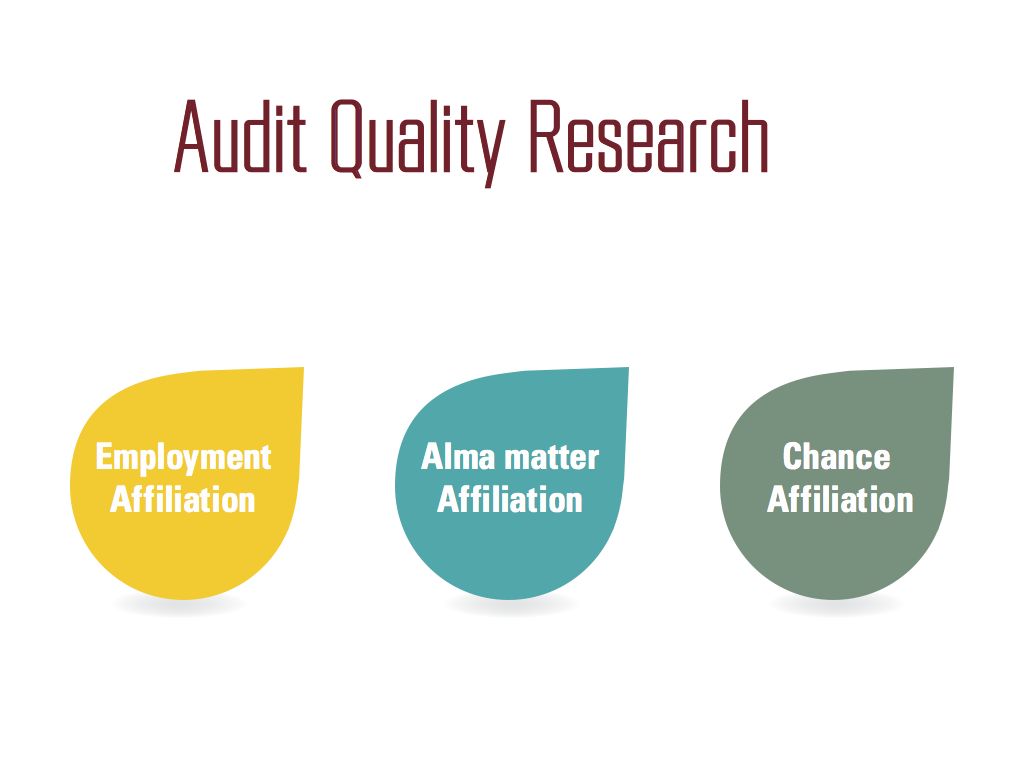Good Intentions, Bad Outcomes: How Following Orders Can be the Wrong Choice
There has been significant discussion and concern regarding audit quality when an affiliation exists between the external auditor and the client. Audit quality is defined as the joint probability that an existing problem is discovered and reported by the auditor (DeAngelo, 1981). If a problem exists, the probability of problem discovery depends on the auditor’s competence and effort and on the ability of senior executives to hide or minimize the problem’s appearance. The probability that an auditor reports a discovered problem largely depends on auditor independence. The concern is that collusion—either explicit or implicit—can occur between the auditor. The appearance of impropriety increases when an auditor begins working for the client he or she once audited. In such a situation, the former auditor may be less likely to confront management with problems uncovered during the audit.

Audit quality research identifies three types of affiliations that can jeopardize auditor independence: employment affiliation, alma mater affiliation and chance affiliation. As in Harold’s case, employment affiliation happens when an individual leaves the audit firm to work for a client. Alma mater affiliation happens when an executive convinces his company to appoint his former audit firm. Chance affiliation happens more randomly. For example, an individual may have trained at a particular audit firm and, years later, the employee’s new firm may hire his previous employer.
All of these affiliations can have an impact on audit quality and auditor independence. For example, the auditor may be too friendly with the client depending on the prior affiliations or the auditor may be too familiar with the auditor’s testing methodologies which could make it easier to circumvent those controls.

